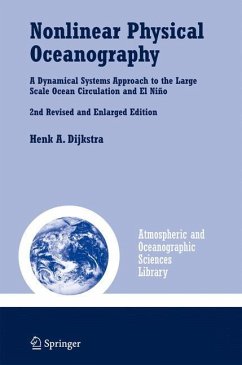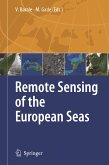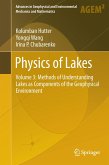In the ?rst edition of this book (publishedby Kluwer Academic in November 2000) the methodology of dynamical systems theory was introduced and appli- cations of this theory to the large-scale ocean circulation and El Nino were p- vided. Surprisedby the favorable reactions, I decided to make a second edition of the book which could be more easily used as a textbook for a graduate (700-level) course. The ?rst edition has undergone a substantial rewrite on three aspects: (i)thetext has been adapted at manylocations to improve clarity and readability, (ii)many recent results on thewind-driven ocean circulation, thethermohaline circulation and El Nino have been included, and (iii) a number of exercises have been added at the end of each chapter. In chapter 1, the description of what is known from observations on the global ocean circulation has been improved by including, for example, recent estimates of transport quantities. Both thechapters 2 and 3 have only slightly changed; inchapter 3, the text on homoclinic orbits has been extended as these type of phenomena have now clearly been found in the wind-driven double-gyre ocean circulation (as presented in chapter 5). In chapter 4, I have added a paragraph on the computation of isolated branches of steady states and the text on the iterative linear systems solvers has been shortened.
Hinweis: Dieser Artikel kann nur an eine deutsche Lieferadresse ausgeliefert werden.
Hinweis: Dieser Artikel kann nur an eine deutsche Lieferadresse ausgeliefert werden.
"An old distinction comes to mind when considering Henk Dijkstra's satisfying new book on nonlinear physical oceanography: While many texts convey knowledge to the reader, this is a rare example of one which imparts some wisdom. (...) In summary, this text is different from most others in that it combines several different disciplines and drwas on many scientific studies in order to deduce mechanisms of ocean circulation. As it therefore cannot be substituted, and as it meets its unique goals with clarity and thoroughness, it has merited this enthusiastic review". (Wendy Welch Orlando (Northwest Research Associates, Inc.) in SIAM Vol. 44, No. 1, 2002 on the book's first edition)
Several additional reviews on the first edition available, excerpts on the book's homepage on springeronline.
From the reviews of the second edition:
"This book ... falls into the broad category of advanced graduate text cum research monograph. It does more than most books in this category to actually serve as a text ... . The presentation of the book is excellent and includes a nice selection of color plates at the end ... . The book clearly belongs on the shelf or in the departmental library of any serious physical oceanographer and is highly recommended for applied and computational mathematicians ... ." (Michael Ghil, Geophysical and Astrophysical Fluid Dynamics, Vol. 102 (3), June, 2008)
Several additional reviews on the first edition available, excerpts on the book's homepage on springeronline.
From the reviews of the second edition:
"This book ... falls into the broad category of advanced graduate text cum research monograph. It does more than most books in this category to actually serve as a text ... . The presentation of the book is excellent and includes a nice selection of color plates at the end ... . The book clearly belongs on the shelf or in the departmental library of any serious physical oceanographer and is highly recommended for applied and computational mathematicians ... ." (Michael Ghil, Geophysical and Astrophysical Fluid Dynamics, Vol. 102 (3), June, 2008)
Wendy Welch Orlando (Northwest Research Associates, Inc.) in SIAM Vol. 44, No. 1, 2002 on the book's first edition:
"An old distinction comes to mind when considering Henk Dijkstra's satisfying new book on nonlinear physical oceanography: While many texts convey knowledge to the reader, this is a rare example of one which imparts some wisdom. (...) In summary, this text is different from most others in that it combines several different disciplines and drwas on many scientific studies in order to deduce mechanisms of ocean circulation. As it therefore cannot be substituted, and as it meets its unique goals with clarity and thoroughness, it has merited this enthusiastic review".
Several additional reviews on the first edition available, excerpts on the book's homepage on springeronline.
From the reviews of the second edition:
"This book ... falls into the broad category of advanced graduate text cum research monograph. It does more thanmost books in this category to actually serve as a text ... . The presentation of the book is excellent and includes a nice selection of color plates at the end ... . The book clearly belongs on the shelf or in the departmental library of any serious physical oceanographer and is highly recommended for applied and computational mathematicians ... ." (Michael Ghil, Geophysical and Astrophysical Fluid Dynamics, Vol. 102 (3), June, 2008)
"An old distinction comes to mind when considering Henk Dijkstra's satisfying new book on nonlinear physical oceanography: While many texts convey knowledge to the reader, this is a rare example of one which imparts some wisdom. (...) In summary, this text is different from most others in that it combines several different disciplines and drwas on many scientific studies in order to deduce mechanisms of ocean circulation. As it therefore cannot be substituted, and as it meets its unique goals with clarity and thoroughness, it has merited this enthusiastic review".
Several additional reviews on the first edition available, excerpts on the book's homepage on springeronline.
From the reviews of the second edition:
"This book ... falls into the broad category of advanced graduate text cum research monograph. It does more thanmost books in this category to actually serve as a text ... . The presentation of the book is excellent and includes a nice selection of color plates at the end ... . The book clearly belongs on the shelf or in the departmental library of any serious physical oceanographer and is highly recommended for applied and computational mathematicians ... ." (Michael Ghil, Geophysical and Astrophysical Fluid Dynamics, Vol. 102 (3), June, 2008)








